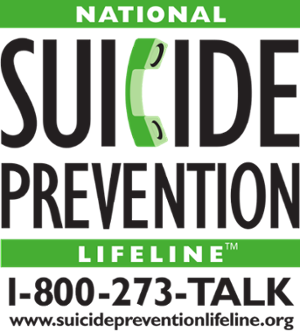Stop Montana Deaths: Suicide Warning Signs and Prevention
by Noelle Rivard and Krista Steinbeisser
March 2020
According to the state health department statistics, for the past thirty years Montana has consistently topped the charts as being one of the top five states in the U.S. with the highest suicide rates. Experts say that this may be the result of the many challenges that rural residents in Montana face. Shortages of rural health providers and traveling long distances for specialized care can make it tough for Montanans to get the help they need when the causes of suicide set in. These same experts say that by recognizing the warning signs and working through the challenges that lead up to these deaths, all Montanans can have a role in lowering the rates of suicide.
 Many
situations can trigger thoughts of suicide. Experts have
found that there are certain common warning signs that
raise concern and show that a person may be considering
suicide as an option. One sign is to talk about feeling
trapped, feeling alone, or that someone feels they are
weighing others down. Other warning signs are
irritability, changing sleep patterns – both
not sleeping or sleeping too much – and using
more alcohol or drugs. If these signs are seen in
friends, family members, or in the workplace, experts say
that it is important to directly ask the person if they
are planning to kill themselves. It's now a well-known
myth that asking these questions will cause a person to
take their life. Instead, asking these questions can save
lives. If a person talks about wanting to die, not having
a reason to live, or is looking for a way to kill
themselves, get immediate help from law enforcement or
other emergency personnel without hesitation.
Many
situations can trigger thoughts of suicide. Experts have
found that there are certain common warning signs that
raise concern and show that a person may be considering
suicide as an option. One sign is to talk about feeling
trapped, feeling alone, or that someone feels they are
weighing others down. Other warning signs are
irritability, changing sleep patterns – both
not sleeping or sleeping too much – and using
more alcohol or drugs. If these signs are seen in
friends, family members, or in the workplace, experts say
that it is important to directly ask the person if they
are planning to kill themselves. It's now a well-known
myth that asking these questions will cause a person to
take their life. Instead, asking these questions can save
lives. If a person talks about wanting to die, not having
a reason to live, or is looking for a way to kill
themselves, get immediate help from law enforcement or
other emergency personnel without hesitation.
Understanding common situations that trigger thoughts of suicide can also lead to better understanding the signs of suicide. Scientists know that stress can trigger the brain to think that the best option to handle difficult situations and feelings is to end one's life. Decreasing stress may help control these thoughts by doing activities such as short walks down a quiet country road, in the pasture, or in the town park. Another activity is taking a "brain break," a break that is 5-10 minutes long and can be done throughout the day to relax and recharge. A third activity is getting involved in community groups, like doing activities at church or having game nights with family and friends. A final activity is to simply talk with a friend or family member. Though these activities may feel awkward and new to do, they have been proven to help a person feel in control of their life again. This is a feeling that experts say can help prevent suicide.
Suicide is a preventable action. Learning about the warning signs of suicide and preventive activities is just a start to doing something about Montana's suicide rates. If someone is experiencing thoughts of suicide, call the Montana Suicide Prevention Lifeline, the National Suicide Prevention Lifeline (now called 988 Suicide and Crisis Lifeline), or 911 to get support right away.
As part of their occupational therapy Master's degree capstone project, Farmer and Rancher Suicide: Raising Awareness, the student authors leveraged the health literacy aspect of the TRHE program model. This allowed translation of their research into a plain language article appropriate for publication in rural newspapers. This article appeared in the March 2020 issue of the Sidney Herald. In the July 2020, the Walsh County Record published a similar article "Stop North Dakota Deaths: Warning Signs and Prevention."
About the Authors

 Noelle Rivard, on left, and Krista Steinbeisser
are master's students in Occupational Therapy at the
University of North Dakota School of Medicine & Health
Sciences. As future rural healthcare leaders, they have
written this column to provide health information for
Montana communities. The information is not for diagnosis
or treatment and should not be used in place of previous
medical advice provided by a licensed practitioner.
Noelle Rivard, on left, and Krista Steinbeisser
are master's students in Occupational Therapy at the
University of North Dakota School of Medicine & Health
Sciences. As future rural healthcare leaders, they have
written this column to provide health information for
Montana communities. The information is not for diagnosis
or treatment and should not be used in place of previous
medical advice provided by a licensed practitioner.
